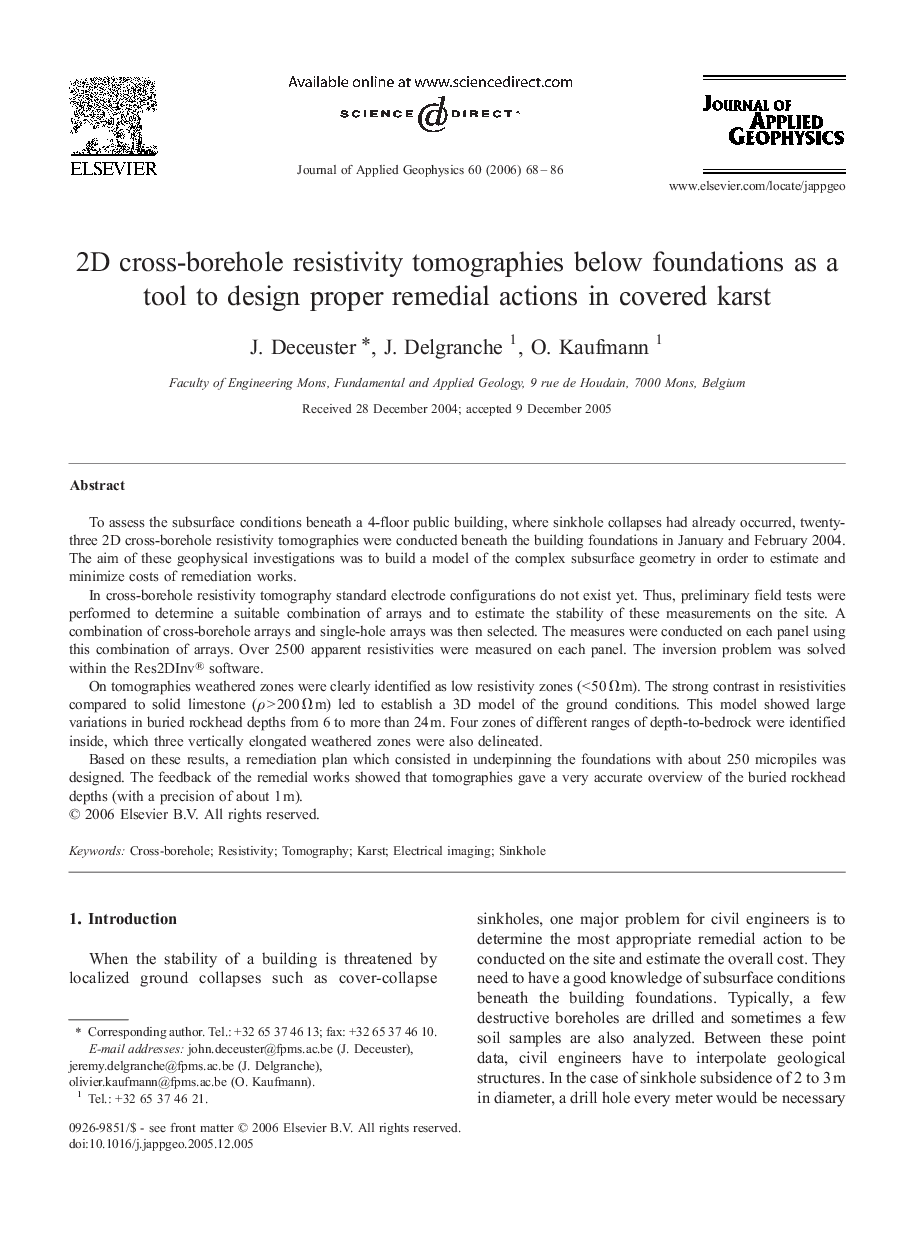| Article ID | Journal | Published Year | Pages | File Type |
|---|---|---|---|---|
| 4741303 | Journal of Applied Geophysics | 2006 | 19 Pages |
To assess the subsurface conditions beneath a 4-floor public building, where sinkhole collapses had already occurred, twenty-three 2D cross-borehole resistivity tomographies were conducted beneath the building foundations in January and February 2004. The aim of these geophysical investigations was to build a model of the complex subsurface geometry in order to estimate and minimize costs of remediation works.In cross-borehole resistivity tomography standard electrode configurations do not exist yet. Thus, preliminary field tests were performed to determine a suitable combination of arrays and to estimate the stability of these measurements on the site. A combination of cross-borehole arrays and single-hole arrays was then selected. The measures were conducted on each panel using this combination of arrays. Over 2500 apparent resistivities were measured on each panel. The inversion problem was solved within the Res2DInv® software.On tomographies weathered zones were clearly identified as low resistivity zones (< 50 Ωm). The strong contrast in resistivities compared to solid limestone (ρ > 200 Ω m) led to establish a 3D model of the ground conditions. This model showed large variations in buried rockhead depths from 6 to more than 24 m. Four zones of different ranges of depth-to-bedrock were identified inside, which three vertically elongated weathered zones were also delineated.Based on these results, a remediation plan which consisted in underpinning the foundations with about 250 micropiles was designed. The feedback of the remedial works showed that tomographies gave a very accurate overview of the buried rockhead depths (with a precision of about 1 m).
